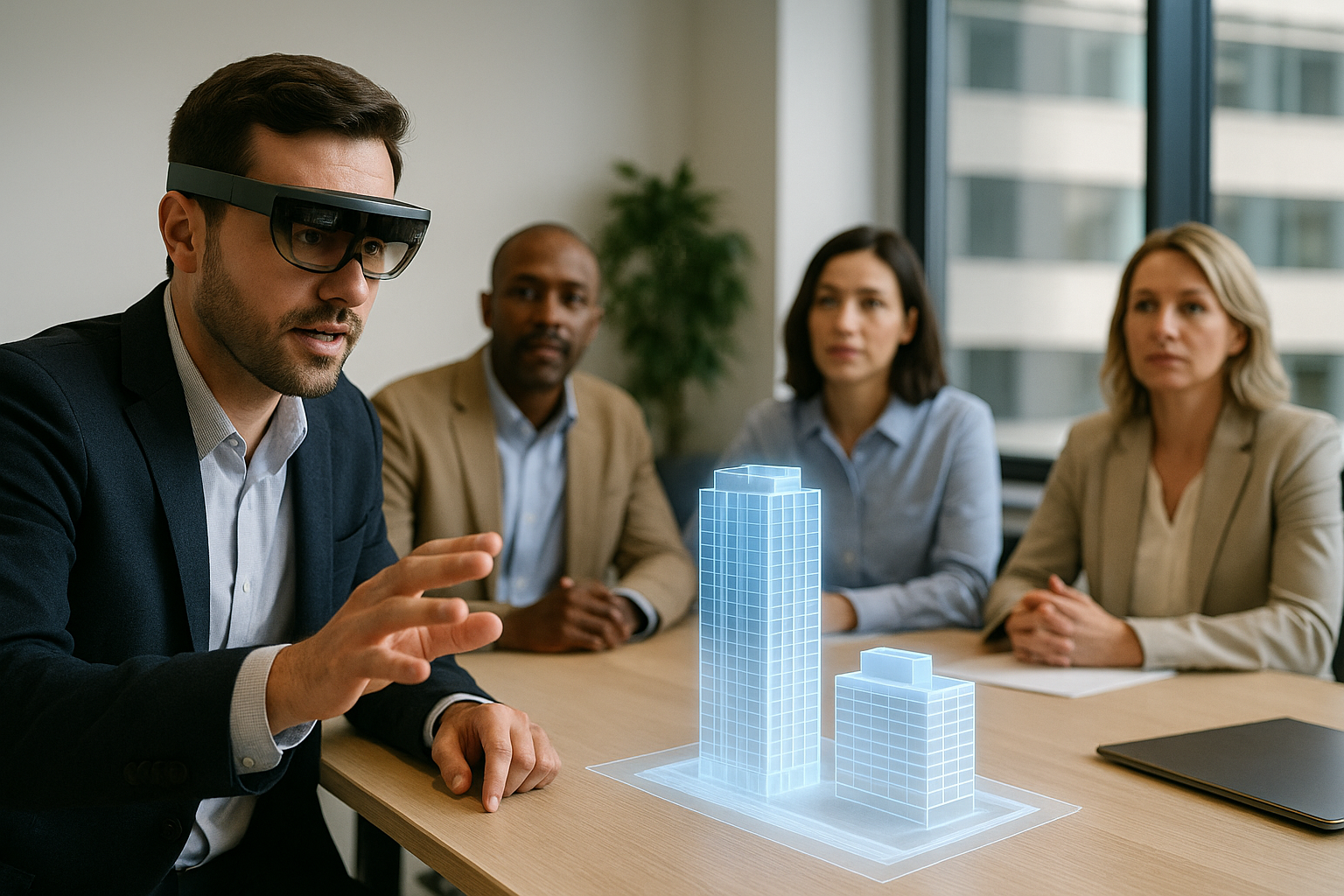Using AR for winning architecture proposals is no longer a novelty—it’s a smart strategy. In a competitive RFP environment, clients are looking for firms that don’t just think creatively but communicate clearly. With augmented reality, you don’t just tell the story—you show it in 3D, in context, and in real time.
Whether you’re pitching a high-rise, a cultural center, or a mixed-use community, AR helps your ideas stand out, your design intent land faster, and your team look more innovative. This article explores how architects are using AR to improve shortlisting odds, impress stakeholders, and land more projects.
Why Traditional Proposals Fall Short
Architectural proposals often rely on static renderings, written narratives, and limited visual immersion. But today’s decision-makers expect more:
- Instant understanding of design intent
- Confidence in how the building fits the site and user needs
- Proof that your team can deliver innovation and clarity
AR gives you all three. It lets your audience see the building where it belongs—on-site, at full scale, and in motion.
Key Advantages of AR in Proposal Presentations
1. Stand Out During Competitive Shortlists
When every firm is showing polished renderings, AR takes you one step further. You can:
- Demonstrate spatial flow and access
- Show environmental context (sunlight, views, shadows)
- Involve the audience in walking through the design
Decision-makers remember proposals that are immersive, not just informative.
2. Improve Stakeholder Confidence and Alignment
Boards and review committees often struggle to imagine abstract spaces. AR helps align visions across:
- Executive teams
- Municipal agencies
- Public engagement groups
When everyone can see and explore the design, approvals move faster and collaboration deepens.
3. Reduce Ambiguity and Revisions
Many lost proposals come down to “We didn’t understand what you were proposing.” AR gives clarity, reducing questions and subjective interpretation.
This clarity also reduces the risk of misalignment down the road—saving time and protecting your credibility.
Best Practices for Using AR in Proposals
Keep It Focused
Don’t overload the AR model. Highlight key design moves:
- Circulation paths
- Façade articulation
- Public realm integration
Offer Interactivity
Let the audience use a tablet or phone to explore options. With AUGmentecture, you can create:
- Multiple model versions (Option A/B)
- Layer toggles for program or material studies
- On-site AR viewing with GPS alignment
Connect to Project Goals
Frame the AR experience around the proposal’s objectives. For example:
- “Here’s how our design fosters community engagement.”
- “This model shows how we maximize daylight in classrooms.”
AR isn’t the pitch. It’s the amplifier of your pitch.
Real-World Examples of Winning Proposals with AR
University Science Building
An architecture firm won a university competition by using AR to let faculty walk through lab layouts during their interview. The science dean said: “No other team helped us experience the building.”
Affordable Housing RFP
A design-build team used AR to visualize how the units would fit into the neighborhood and integrate existing trees. Community members praised the realism and transparency, helping the team win both votes and approvals.
How AUGmentecture Supports Winning Proposals
AUGmentecture makes it easy to deploy AR in your proposals without expensive development. Features include:
- Revit, SketchUp, Rhino model import
- Markerless placement and GPS-based anchoring
- Multi-model versioning
- Quick sharing via QR code or app
You can prepare your AR proposal assets in hours—not weeks.
The Competitive Edge in Tomorrow’s RFPs
With AI, AR, and immersive tech on the rise, proposal expectations are changing. Clients want more than vision—they want visibility.
By integrating AR now, you position your firm as forward-thinking, user-focused, and ready to lead through innovation.
Conclusion
Using AR for winning architecture proposals helps you stand out, build trust, and secure buy-in faster. It transforms proposals from presentations into experiences—and gives clients a compelling reason to choose your team.
With AUGmentecture, any firm can create and share immersive design stories that win hearts, minds, and RFPs.




